Greenhouse farming is a revolutionary method that enables farmers to cultivate plants in controlled environments, leading to higher yields and quality produce. To achieve this, understanding ways of improving crop yield is crucial. Farmers often ponder what can be done to increase crop yield, and the answers lie in modern methods to increase crop production and greenhouse production pdfs, which are comprehensive resources for in-depth knowledge.
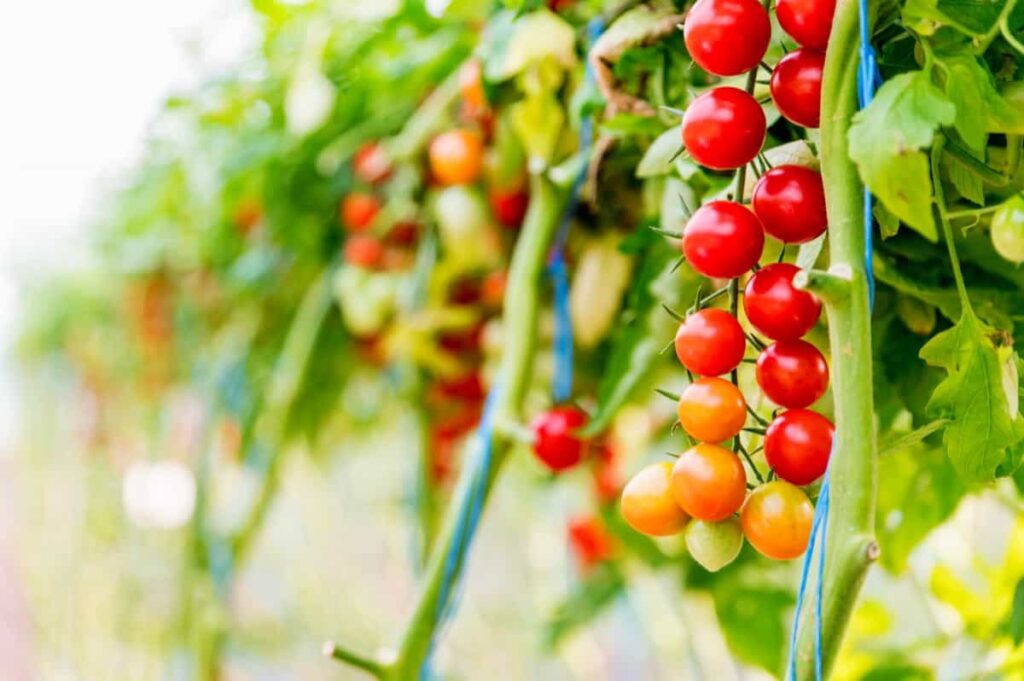
These methods focus on how to increase crop production without harming the environment, ensuring sustainability. To improve crop production, various techniques are implemented, from choosing the right greenhouse structure to optimizing light, temperature, and humidity levels.
How to Skyrocket Greenhouse Crop Yields
Choosing the Right Greenhouse Structure for Maximum Crop Yields
The foundation of boosting greenhouse crop yields starts with selecting the appropriate structure. The structure should be robust enough to withstand local weather conditions and versatile for different crops. Consider factors like size, orientation, material, and ventilation. Size is vital for accommodating the desired number of plants, while orientation affects sunlight exposure.
Materials like polycarbonate or glass influence light transmission and durability. Proper ventilation is critical for air circulation, which prevents diseases and maintains a healthy growing environment. Each element plays a unique role in creating an optimal setting for crops to thrive.
How to Optimize Light Conditions for Enhanced Crop Yields in Greenhouses
Light is a pivotal element in greenhouse farming, influencing plant growth and yields. Optimizing light involves balancing its intensity, duration, and quality. Reflective materials on walls and floors can enhance light distribution, ensuring plants receive adequate sunlight. Installing supplemental lighting like LED or fluorescent lights compensates for lower natural light levels during shorter days or cloudy weather.
In case you missed it: Organic Greenhouse Farming Cost in India: Estimation Per Square Foot and 1 Acre
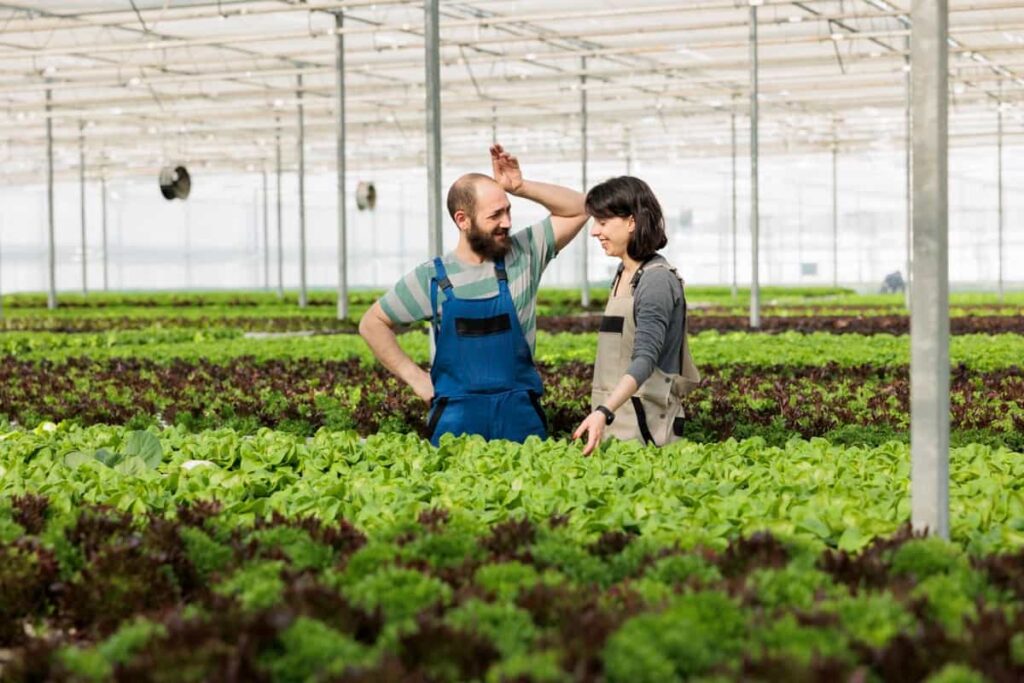
Light filters can manipulate the light spectrum, promoting specific growth stages of plants. By managing these aspects, farmers can create the ideal light environment for their crops, leading to significant improvements in yield and quality.
How to Control Temperature and Humidity Levels for Improved Crop Yields
Temperature and humidity are critical factors in greenhouse crop production. Use heating and cooling systems tailored to your greenhouse size and crop needs to control these. Heaters are essential for maintaining warm temperatures during cold months, while fans or evaporative coolers help reduce heat during warmer periods.
Automatic control systems can be installed for precision and convenience. Humidity levels are equally important; too high can lead to disease, and too low can stress plants. Use humidifiers or dehumidifiers as needed. Proper insulation and ventilation are vital in maintaining consistent temperature and humidity levels. By effectively managing these environmental factors, crops can grow optimally, leading to higher yields and better-quality produce.
How to Implement Proper Ventilation Systems to Boost Crop Yields in Greenhouses
Proper ventilation in greenhouses is essential for controlling temperature, humidity, and air circulation, significantly impacting crop yields. Start by selecting the right type of ventilation system, which can be natural or mechanical. Natural ventilation uses vents and windows strategically placed to utilize wind and temperature differences.
Mechanical systems involving fans and automated controls offer more precision. It’s crucial to ensure that the air movement is uniform, avoiding areas of stagnation or excessive draft. Regular maintenance of these systems is vital to ensure they operate efficiently. Farmers can prevent disease outbreaks, reduce plant stress, and significantly boost crop yields by managing the greenhouse atmosphere effectively.
Best Water Management Techniques for Increased Crop Yields in Greenhouse Settings
Effective water management is critical in greenhouse settings to ensure optimal crop growth and increased yields. Begin by choosing a suitable irrigation method, such as drip irrigation, to efficiently supply water directly to the plant roots, minimizing water waste and mitigating the risk of leaf diseases. Implementing a scheduled watering plan based on the specific needs of your crops can prevent over or under-watering.
In case you missed it: How to Apply and Secure Grants for Starting a Greenhouse Farming Business
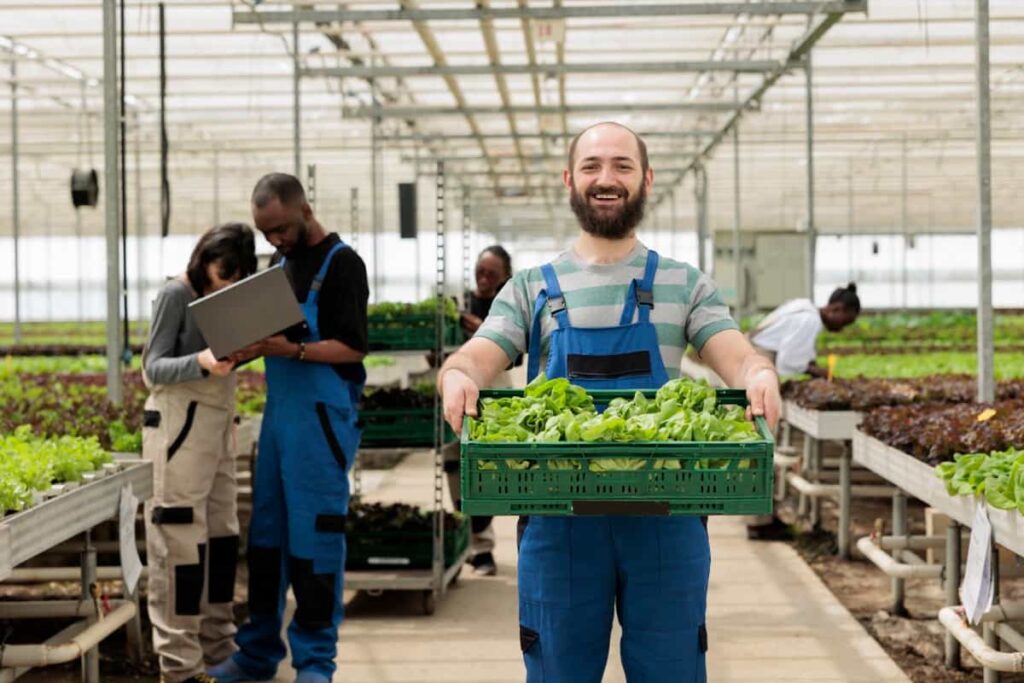
Use moisture sensors to monitor soil water levels and adjust irrigation accordingly. Collecting rainwater and using water-efficient practices can conserve water and reduce costs. Additionally, ensuring proper drainage avoids waterlogging, which can harm plant roots. Farmers can promote healthy plant growth and maximize crop yields in their greenhouses by adopting these water management techniques.
Nutrient and Fertilizer Management Strategies to Maximize Greenhouse Crop Yields
Effective nutrient and fertilizer management is key to maximizing greenhouse crop yields. Start by conducting soil tests to determine the specific nutrient needs of your crops. Create a balanced fertilizer program that addresses these needs, applying the right amount at the right time. Use controlled-release fertilizers to provide a steady supply of nutrients over time or water-soluble fertilizers for quick nutrient uptake.
Incorporate organic matter like compost to improve soil structure and nutrient availability. Monitoring plant health regularly is important to adjust fertilization strategies as needed. By managing nutrients and fertilizers effectively, you can ensure your plants are healthy and productive, leading to higher yields.
Utilizing Organic Fertilizers for Sustainable Crop Yields in Greenhouses
Utilizing organic fertilizers is a sustainable approach to enhance greenhouse crop yields. Organic fertilizers, sourced from plants or animals, offer diverse nutrients and enhance soil quality. Start by choosing the right type of organic fertilizer, such as compost, manure, or bone meal, based on your crop’s nutritional needs.
Apply these fertilizers at the correct rates and times to match the growth stages of your plants. Incorporating organic fertilizers helps build soil structure, enhances water retention, and encourages beneficial microbial activity. Regularly test your soil to monitor nutrient levels and adjust your fertilizer regimen accordingly. By using organic fertilizers, farmers boost crop yields and contribute to sustainable farming practices, maintaining ecological balance and soil fertility.
Integrated Pest Management (IPM) for Enhanced Crop Yields in Greenhouses
Integrated Pest Management (IPM) is a holistic approach to pest control that enhances crop yields in greenhouses by minimizing pest damage while being environmentally friendly. This strategy involves monitoring greenhouse crops regularly for signs of pests, correctly identifying pests, and understanding their life cycles. Utilize a combination of methods such as biological control, using beneficial insects, cultural practices like crop rotation, and mechanical controls such as traps.
In case you missed it: Greenhouse Beekeeping Startup Guide: Design, Techniques, Advantages, and Disadvantages
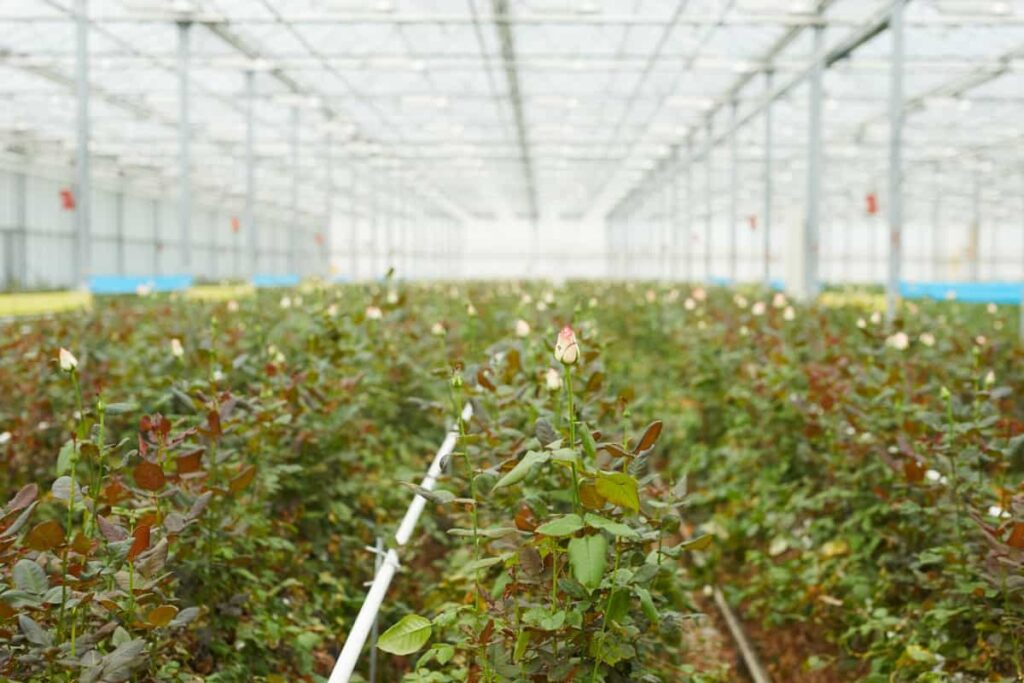
Chemical pesticides should only be employed as a final option, with careful selection to target specific pests and minimal harm to beneficial organisms. Regular training on IPM techniques helps staff identify and manage pest issues promptly and efficiently. By adopting IPM, greenhouse farmers can maintain a balanced ecosystem, effectively control pests, and enhance crop yields.
How to Enhance Pollination Methods for Higher Crop Yields in Greenhouses
Enhancing pollination methods in greenhouses is crucial for increasing crop yields, especially for flowering plants that require pollination to bear fruit. For self-pollinating crops, gently shaking plants or using fans can help distribute pollen. Introducing pollinators like bees can be highly effective for crops requiring cross-pollination.
Alternatively, hand pollination using a brush or similar tool can be used for precise pollination, though it is labor-intensive. Ensure that the greenhouse environment is pollinator-friendly by maintaining appropriate temperature and humidity levels and avoiding the use of harmful pesticides.
Best Pruning and Training Techniques for Increased Crop Yields in Greenhouses
Pruning and training plants in greenhouses are essential for managing plant growth, improving light penetration, and increasing crop yields. Start by understanding the specific pruning needs of each crop. For example, removing lower leaves can improve air circulation and reduce disease risk, while thinning fruits can enhance the size and quality of the remaining produce. Training plants on trellises or supports helps manage plant growth, improves light exposure, and makes harvesting easier.
Regularly prune and train plants to maintain their desired shape and size. This helps maximize space usage and ensures that plants focus their energy on producing fruits rather than excessive foliage. Adopting these techniques can lead to healthier plants and increased yields in greenhouse settings.
Managing Plant Density and Spacing for Improved Greenhouse Crop Yields
Proper plant density and spacing management are crucial for maximizing greenhouse crop yields. Overcrowding can lead to light, nutrients, and water competition, reducing overall yields. Start by understanding the space requirements of each crop and plan your greenhouse layout accordingly. Use spacing guidelines to ensure each plant has enough room to grow without competing with its neighbors.
This also improves air circulation, reducing the risk of disease. For climbing plants, use vertical space effectively with trellises or supports. Regularly assess plant growth and adjust spacing as needed, especially if plants grow more vigorously than expected. By effectively managing plant density and spacing, greenhouse farmers can optimize growing conditions, leading to healthier plants and improved crop yields.
Crop Rotation and Succession Planting for Continuous Yield Improvement
Implementing crop rotation and succession planting in greenhouses is a strategic way to maintain continuous yield improvement. Crop rotation is the practice of altering the crop varieties cultivated in a specific region across different seasons or years. This practice helps break pest and disease cycles, reduce soil depletion, and improve soil fertility. For instance, rotating nitrogen-fixing legumes with other crops can naturally enrich the soil.
In case you missed it: 12 Garden Watering System Kits – For Raised Garden Beds, Yards, Container Plants, Lawns, and Greenhouse
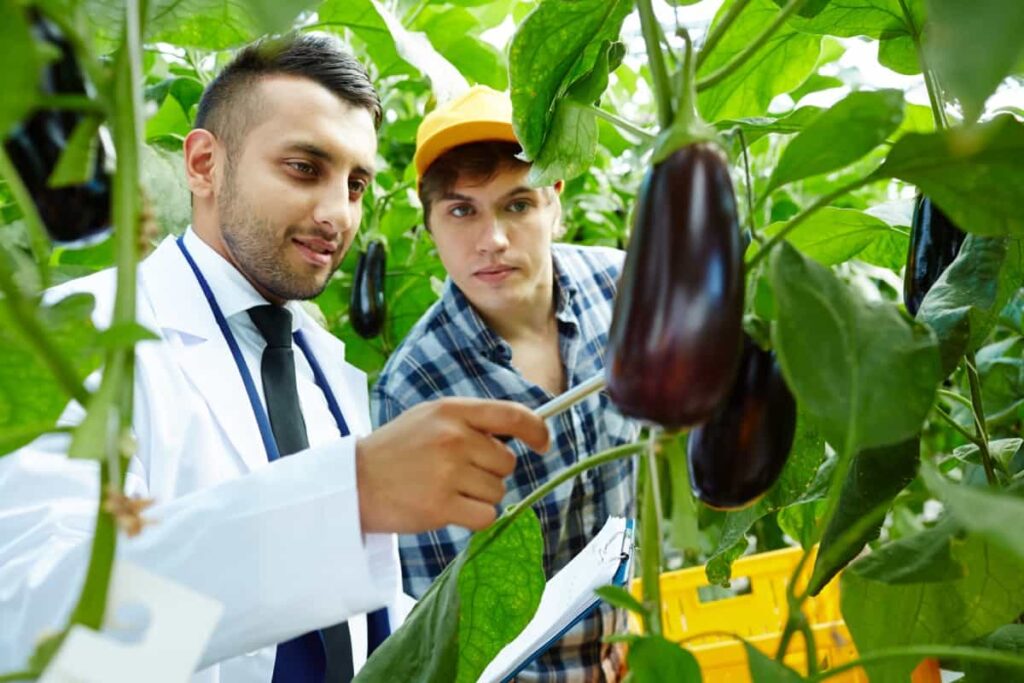
Succession planting, on the other hand, refers to planning sequential plantings of the same or different crops to ensure a steady harvest. This can involve planting new crops as soon as one is harvested or staggering plantings to extend the harvest period. By adopting these techniques, greenhouse farmers can optimize the use of space and resources, maintain healthy soil, and enjoy continuous yields throughout the year.
Utilizing Beneficial Microorganisms for Enhanced Soil Health and Crop Yields
Utilizing beneficial microorganisms in greenhouse soils is a natural way to enhance soil health and, in turn, increase crop yields. Microorganisms such as bacteria, fungi, and protozoa are essential for nutrient cycling, breaking down organic matter, and enhancing soil quality. Introducing beneficial microorganisms can be achieved by applying compost, compost teas, or commercially available microbial inoculants.
These organisms help make nutrients more available to plants, protecting roots from pathogens and improving soil water retention. Regular testing and monitoring of soil microbial health are important to understand the needs and impacts of these applications. Greenhouse farmers can enhance plant growth, increase disease resistance, and achieve higher crop yields by maintaining a healthy microbial population in the soil.
Advanced Irrigation Systems for Efficient Water Distribution in Greenhouses
Implementing advanced irrigation systems in greenhouses is crucial for efficient water distribution and optimal plant growth. These systems range from drip irrigation, which delivers water directly to the root zone, to automated overhead systems that can be programmed based on specific crop needs. Drip irrigation effectively reduces water wastage and prevents disease by keeping foliage dry.
Advanced systems often incorporate sensors and timers that monitor soil moisture levels and automate watering schedules, ensuring plants receive the right amount of water at the right time. This conserves water and enhances nutrient uptake, leading to healthier plants and improved yields. By investing in advanced irrigation systems, greenhouse farmers can achieve more precise water management, reduce labor costs, and significantly increase the efficiency and sustainability of their farming operations.
Frequently Asked Questions (FAQ) on Greenhouse Crop Yields
How Do You Increase Plant Yield in a Greenhouse?
To increase plant yield in a greenhouse, optimize environmental conditions like light, temperature, and humidity. Implement advanced irrigation and nutrient management systems and use proper plant spacing, pruning, and utilizing beneficial microorganisms for soil health.
What Methods Do the Farmers Use to Increase Their Yield?
Farmers increase their yield by adopting crop rotation and succession planting, using Integrated Pest Management (IPM) to control pests, and employing advanced irrigation systems. They also improve soil fertility through organic amendments and utilize high-yield crop varieties.
What Techniques Are Used to Improve Agricultural Yields?
Techniques to improve agricultural yields include precision farming, genetically modified crops for higher resistance and productivity, advanced irrigation and fertilizer management, and adopting sustainable practices like organic farming and conservation agriculture.
What Are the Three Main Approaches Used in Increasing Crop Yields?
The three main approaches to increasing crop yields are genetic improvement of crops for higher yield potential, optimizing farming practices (like irrigation, fertilization, and pest control), and employing technology advancements like automation and data analytics for precision agriculture.
In case you missed it: Greece Greenhouse Farming: A Comprehensive Guide
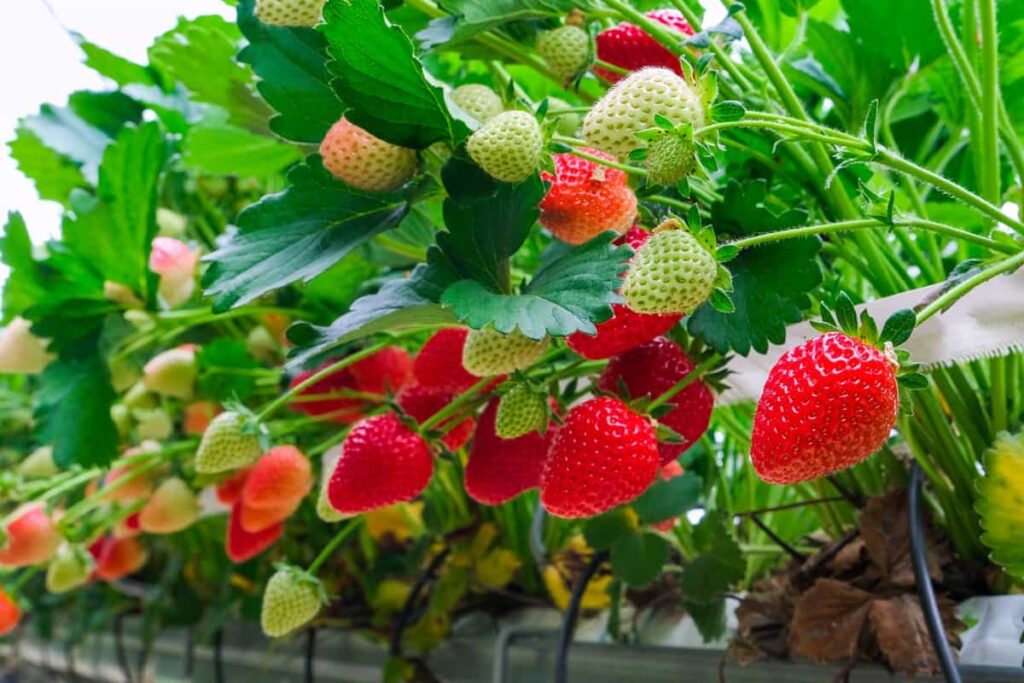
Conclusion
Skyrocketing greenhouse crop yields involve a comprehensive approach that combines the right structural choices, environmental control, and cultivation practices. Each aspect is critical in optimizing growing conditions, from choosing the appropriate greenhouse structure to implementing advanced irrigation systems. Techniques like Integrated Pest Management, effective pollination, and smart nutrient management contribute to healthier plants and higher yields.
Additionally, embracing crop rotation, succession planting, and utilizing beneficial microorganisms are key to sustainable growth and continuous yield improvement. By integrating these proven strategies, greenhouse farmers can significantly enhance their crop production, ensuring sustainability and profitability in their agricultural endeavors.
- Management Pests and Diseases in Your Cotton Field
- Sheep Farming Business Plan for Beginners
- Aquaponic Farming at Home: A Step-By-Step Guide
- Profitable Village Farming Business Ideas in 2024
- High-Yield Aquaculture: Fast-Growing Fish for Farming
- Effective Fish Pond Construction Techniques for Beginners
- Irrigation and Water Management in Pineapple Farming
- Blossom to Harvest: Mastering Flowering and Pollination in Papaya Farming
- Pig Fattening Essentials: From Selection to Sale for Beginners
- Raising Wagyu Cattle: A Complete Guide for Premium Beef Production
- Soil Types and Their Water Holding Capacity
- Optimizing Irrigation Schedules for Coconut Groves for Enhanced Yield
- Espresso Your Garden: Coffee Grounds for Healthier Acid-Loving Plants
- The Best Soil Mix for Snake Plants: How to Mix Your Own Snake Plant Soil
- Green Thumb Success: Expert Tips for Cultivating Greenhouse Beans All Year Round
- Bloom All Year Round: The Ultimate Guide to Indoor Hyacinth Care
- Eco-Friendly Gardening: How to Make Liquid Fertilizer from Kitchen Waste
- Ultimate Guide to Grow Anise in Pots: Explore Seed Propagation to Harvesting
- Guide to Raising Chester White Pigs: Discover Breed Facts to Growth Management
- Mastering the Elegance: The Ultimate Guide to Weeping Cherry Tree Care, Planting, and Maintenance
- Ultimate Guide to Planting Garlic in Grow Bags: Growing Strategies for Beginners
- How to Fix Spider Plant Leaf-Related Problems: Natural and Organic Remedies
- 10 Reasons Why Your Tulsi Plant is Shedding Leaves: Home Remedies and Solutions
- Optimizing Growth and Yield: The Advantages of Palm Bunch Ash Fertilizer
- Utilizing Neem Oil Extract as a Natural Pesticide for Hydrangea
- From Soil to Harvest: Various Ways in Which Farmers Can Use AI Tools
- Steps to Encourage and Induce Citrus Flowers: A Comprehensive Guide
- How to Fix Snake Plant Leaf-Related Issues: Natural and Organic Remedies
- Transform Your Garden into a Fragrant Oasis with Raat Ki Rani (Night Blooming Jasmine)
- Discover the Ideal Chicken Breeds for Philippine Farms
- How to Create a Poultry Egg Farm Business Plan for Profits
- Grow Lemon Cucumbers Like a Pro: Insider Techniques for Bountiful Yields
- Ultimate Guide to Caring for Your Pink Princess Philodendron: Tips for Thriving Variegation
- Areca Nut Profit Per Acre: Calculating Yield and Cost of Cultivation
- How Kaveri Chicken is Becoming a More Profitable Breed in Indian Backyards
- Transform Your Barn: 9 Steps to Convert a Horse Stall into a Chicken Coop
